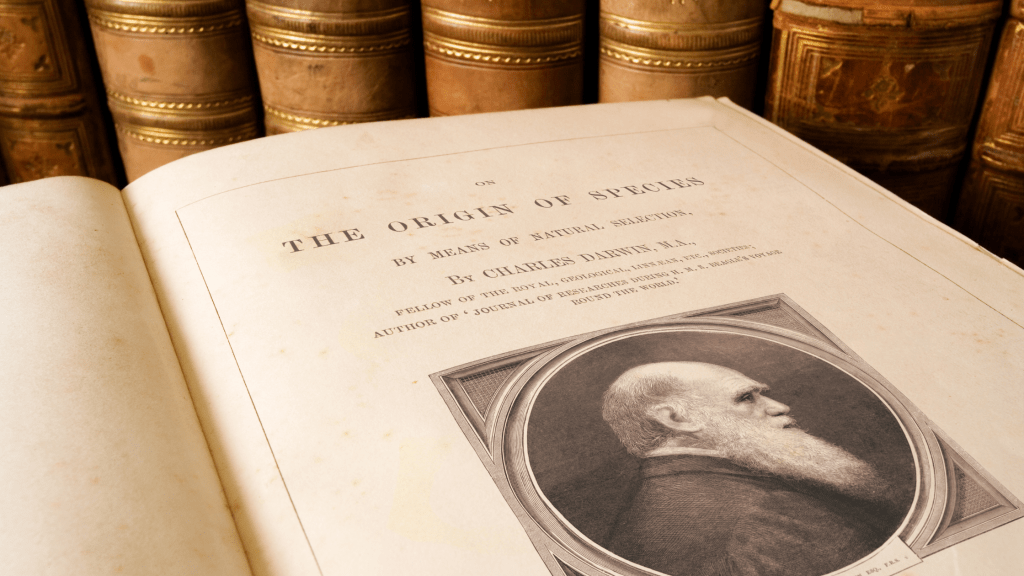The Art of Time Management for the Sensitive and Deep-Thinking Woman
A Guide for The High-Performing Woman Who Feels Like There’s Never Enough Time for HERSELF.

The simple truth is mastering your schedule can feel like an uphill battle between your ambition and your need for self-care, right? Juggling multiple responsibilities while striving for professional excellence with personal fulfillment requires a touch of magic, a sprinkle of wisdom, and a whole lot of heart.
So today, let’s go on a transformative journey into the art of Time Management.
Time Blocking, Day Theming and Task Batching might sound like confusing ‘Books with seven seals’ , but hold on and take a deep breath. These powerful techniques are designed to honor your introverted nature while maximizing your productivity and joy… and after going through this guide, you will know what to do!
Shall we?
The Power of Time Blocking: Your Personal Diary of Productivity
Imagine having a personal diary that not only records your thoughts and feelings but also guides your day with precision and purpose. Time Blocking is exactly that—a reflective, intentional approach to managing your time.
How it Works:
- Set Intentions: Each morning, start by setting clear intentions. What are your top priorities? How do you want to feel by the end of the day?
- Document Your Day: Break your day into blocks, each dedicated to specific activities. This could be work, self-care, family time, or creative pursuits.
- Reflect and Adjust: At the end of the day, review your block. Did you achieve your goals? How did the day flow? Adjust your approach based on your reflections.
Why it Works:
- Self-Reflection: As natural introspective thinkers, this technique aligns perfectly with your need for reflection.
- Structure and Flexibility: It provides a clear structure while allowing the flexibility to adapt to your energy levels and emotional needs.
Step-by-Step Instructions:
-
- Morning Ritual: Begin your day with a quiet moment of reflection. Meditating for 10 minutes? Journaling for 15? A dance session around your kitchen table? Watching the clouds passing by while enjoying your first coffee? Whatever connects you with your inner self is perfect.
- Daily Planning: On your time block, list the key tasks and activities you want to accomplish. Break your day into time blocks and assign tasks accordingly.
- Midday Check-in: Around lunchtime, revisit your time blog to see how you’re progressing. Adjust your schedule if necessary to stay on track.
- Evening Reflection: Before bed, review your day. Note what you accomplished, what you enjoyed, and what could be improved for tomorrow.
Advanced Tips for Time Blocking
Technology – Yes or No? Start with what you already have, but be open to the idea of using digital tools or apps specially designed for time management and time blocking. These can help you create and visualize your schedule effectively.
Theme Your Days: Some individuals find it helpful to dedicate entire days to specific types of tasks. For instance, Monday could be for strategic planning, while Tuesday is focused on client meetings.
PRO TIP: not only schedule your MUSTS! Block also time for SELF-CARE, like a 10 min. ‘Nothing Break’ after a meeting … or commit to your Home Yoga Class by really blocking time in your schedule for it.
Remember the last time you felt overwhelmed by your to-do list? I once had long period where every day felt like a chaotic whirlwind. Then, I discovered Time Blogging. By simply jotting down my intentions and reflecting each evening, I found a sense of peace and control over my days. It was a game-changer.
Day Theming: Embrace the Rhythm of Your Life
No, Day Theming is not about pink ribbons and theme dinner party ( but no judging on that!). Day Theming is about giving each day of the week a specific focus, creating a rhythm that aligns with your personal and professional life.
How it Works:
- Identify Themes: Decide on themes that resonate with your goals and values. For example, Monday could be “Planning Day,” Wednesday could be “Creative Day,” and Friday could be “Learning Day.”
- Plan Accordingly: Schedule tasks that align with each day’s theme. This reduces decision fatigue and helps you immerse fully in the activity of the day.
- Stick to the Theme: As much as possible, honor the theme. This consistency fosters a sense of stability and focus.
Why it Works:
- Deep Work: INFJs thrive in environments where they can dive deep into their interests. Day Theming supports this by allowing you to fully engage with one type of task or activity.
- Emotional Harmony: It creates a predictable pattern that can be soothing and stabilizing, especially for sensitive and empathetic individuals.
A Step-by-Step Instructions:
- Weekly Planning: On Sunday evening, set themes for each day of the upcoming week based on your goals and commitments.
- Task Assignment: For each themed day, assign specific tasks that align with the theme. For example, on “Planning Day,” focus on administrative tasks and strategic planning.
- Daily Adherence: Throughout the week, focus on the theme of the day. Avoid distractions that don’t align with the day’s focus to maintain deep, productive work.
- Weekly Review: At the end of the week, review how the themes worked for you. Adjust themes as needed to better align with your priorities and energy levels.
What would your ideal week look like if each day had a distinct focus that honored both your professional ambitions and personal needs?
I used to dread Mondays until I made them my “Vision & Planning Days.” Instead of the usual chaos, I dedicated Mondays to setting up my week with clear intentions and goals. This shift made a world of difference, turning Mondays into a day I now look forward to.
Task Batching? The Ultimate Strategy for Focused Efficiency
Task Batching involves grouping similar tasks together and dedicating specific time blocks to complete them. This minimizes the mental load of switching between different types of work and boosts your efficiency.
How it Works:
- Group Similar Tasks: Identify tasks that require similar types of thinking or resources. For example, batch all your email responses together or dedicate a block of time to creative brainstorming.
- Schedule Batches: Allocate specific time slots in your calendar for these batches. Ensure they align with your peak energy levels.
- Stay Focused: During these batches, focus solely on the tasks at hand. Avoid multitasking and external distractions.
Why it Might Work For You As Well:
- Focused Energy: INFJs have deep wells of creativity and thoughtfulness. Task Batching allows you to harness this energy without constant interruptions.
- Reduced Overwhelm: By compartmentalizing your tasks, you prevent the overwhelm that comes with juggling too many things at once.
Step-by-Step Instructions:
- Task Categorization: List out all your tasks for the week and group them into categories such as administrative, creative, or personal.
- Batch Scheduling: Look at your weekly schedule and assign specific time blocks for each batch of tasks. Ensure these align with your natural energy peaks.
- Focused Execution: When it’s time to work on a batch, eliminate distractions. Put your phone on Do Not Disturb, close unnecessary tabs, and immerse yourself fully in the task.
- Review and Adjust: After completing each batch, review your efficiency and adjust future time blocks as needed to improve productivity.
I remember a time when my to-do list felt like an endless mountain. By grouping similar tasks together — like handling all emails in one go and dedicating another block to brainstorming — I found myself climbing that mountain with so much more ease… and grace!
How would your productivity change if you could focus on one type of task at a time without constant interruptions?
some more tailored and quiet personal tips and insights to help you thrive:
- Honor Your Sensitivity: Embrace your sensitive nature as a strength. Create a workspace that feels calming and nurturing. Use soft lighting, pleasant scents, and minimal clutter to maintain a serene environment.
- Protect Your Energy: Be mindful of your energy levels. Schedule demanding tasks during your peak productivity times and allow for breaks to recharge. Listen to your body and mind, and don’t hesitate to take a moment of solitude when needed.
- Set Boundaries: As an empathetic individual, it’s essential to set boundaries to protect your emotional well-being. Learn to say no gracefully and prioritize your tasks based on their alignment with your values and goals.
- Leverage Your Intuition: Trust your gut feelings when making decisions. Your intuition is a powerful tool that can guide you towards what truly matters and help you navigate complex situations with ease. Look at the informations you have and listen to your inner feeling!
- Seek Meaningful Connections: Surround yourself with like-minded individuals who understand and respect your introverted nature. Engage in deep, meaningful conversations rather than superficial interactions.
okay, let's Bring It All Together...
Combining Time Blocking, Day Theming, and Task Batching creates a powerful trifecta of productivity and self-care tailored to your unique needs! Here’s a glimpse of how it all comes together:
- Morning Reflection (Time Blogging): Set your intentions and outline your day based on the theme.
- Themed Day Focus (Day Theming): Dedicate the day to a specific type of work or self-care.
- Efficient Execution (Task Batching): Group similar tasks and tackle them in focused blocks.
This harmonious approach not only boosts your productivity but also nurtures your sensitive, introspective nature. It’s about working smarter, not harder, and honoring your unique rhythm and energy.

With love & respect

Like free printable templates for daily reflections, weekly themes, and task batches? Let me know. I am here to help.
WAIT A MOMENT: I’d love to hear from you. Share your insights, experiences and questions in the comments below!
( Got questions but want to keep it private? Click this link and let’s have a chat )
The Art of Time Management for the Sensitive and Deep-Thinking Woman Read More »











